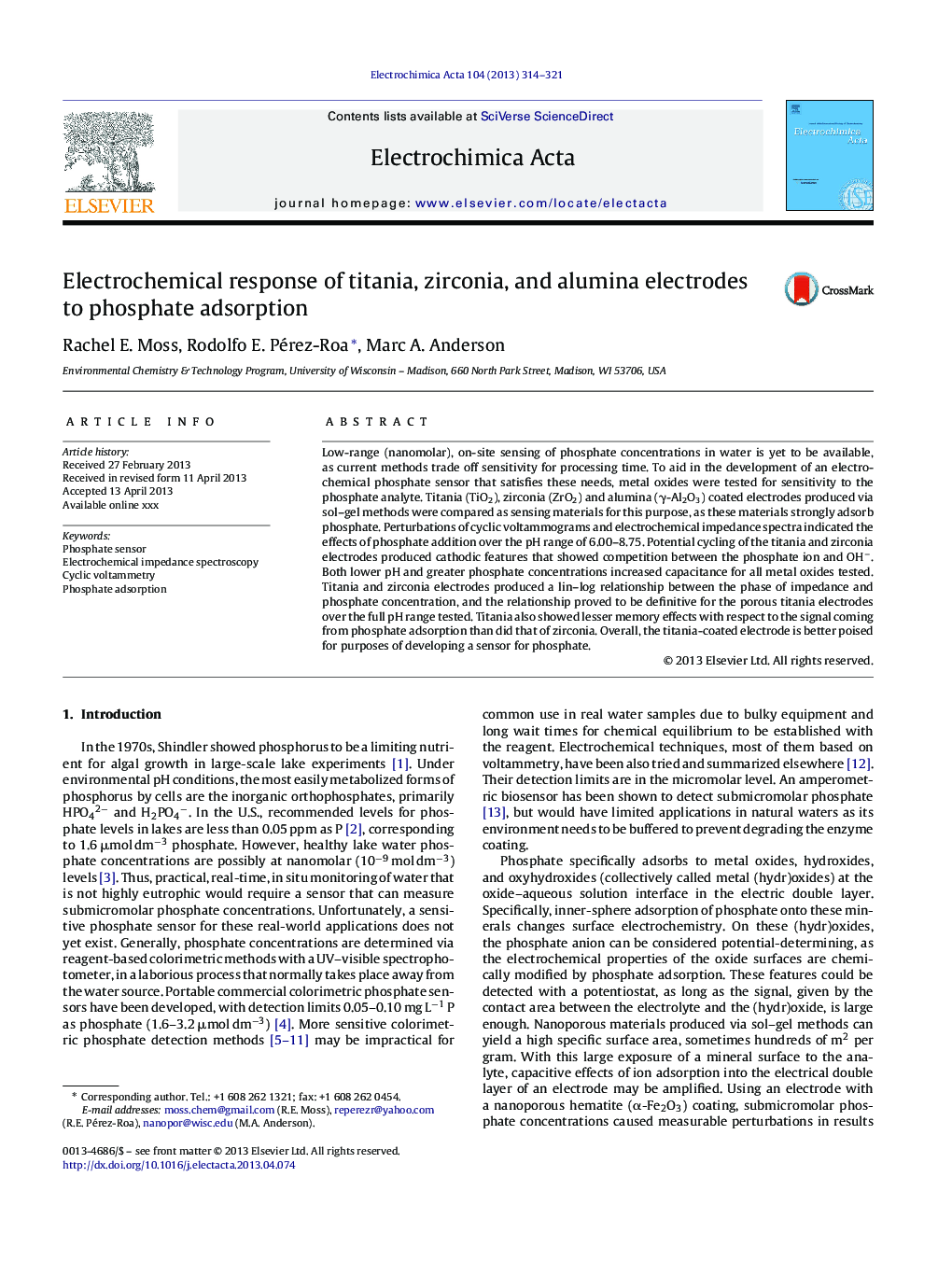| Article ID | Journal | Published Year | Pages | File Type |
|---|---|---|---|---|
| 6617923 | Electrochimica Acta | 2013 | 8 Pages |
Abstract
Low-range (nanomolar), on-site sensing of phosphate concentrations in water is yet to be available, as current methods trade off sensitivity for processing time. To aid in the development of an electrochemical phosphate sensor that satisfies these needs, metal oxides were tested for sensitivity to the phosphate analyte. Titania (TiO2), zirconia (ZrO2) and alumina (γ-Al2O3) coated electrodes produced via sol-gel methods were compared as sensing materials for this purpose, as these materials strongly adsorb phosphate. Perturbations of cyclic voltammograms and electrochemical impedance spectra indicated the effects of phosphate addition over the pH range of 6.00-8.75. Potential cycling of the titania and zirconia electrodes produced cathodic features that showed competition between the phosphate ion and OHâ. Both lower pH and greater phosphate concentrations increased capacitance for all metal oxides tested. Titania and zirconia electrodes produced a lin-log relationship between the phase of impedance and phosphate concentration, and the relationship proved to be definitive for the porous titania electrodes over the full pH range tested. Titania also showed lesser memory effects with respect to the signal coming from phosphate adsorption than did that of zirconia. Overall, the titania-coated electrode is better poised for purposes of developing a sensor for phosphate.
Keywords
Related Topics
Physical Sciences and Engineering
Chemical Engineering
Chemical Engineering (General)
Authors
Rachel E. Moss, Rodolfo E. Pérez-Roa, Marc A. Anderson,
